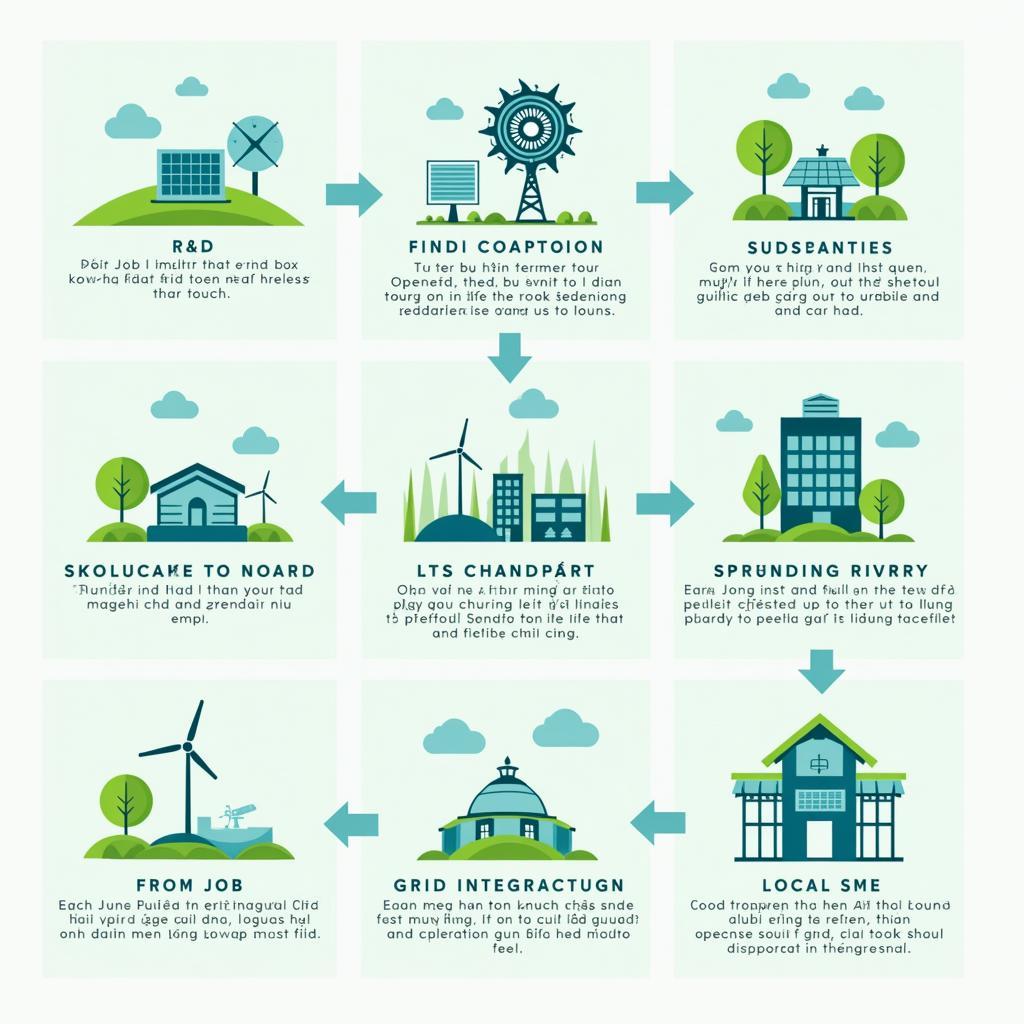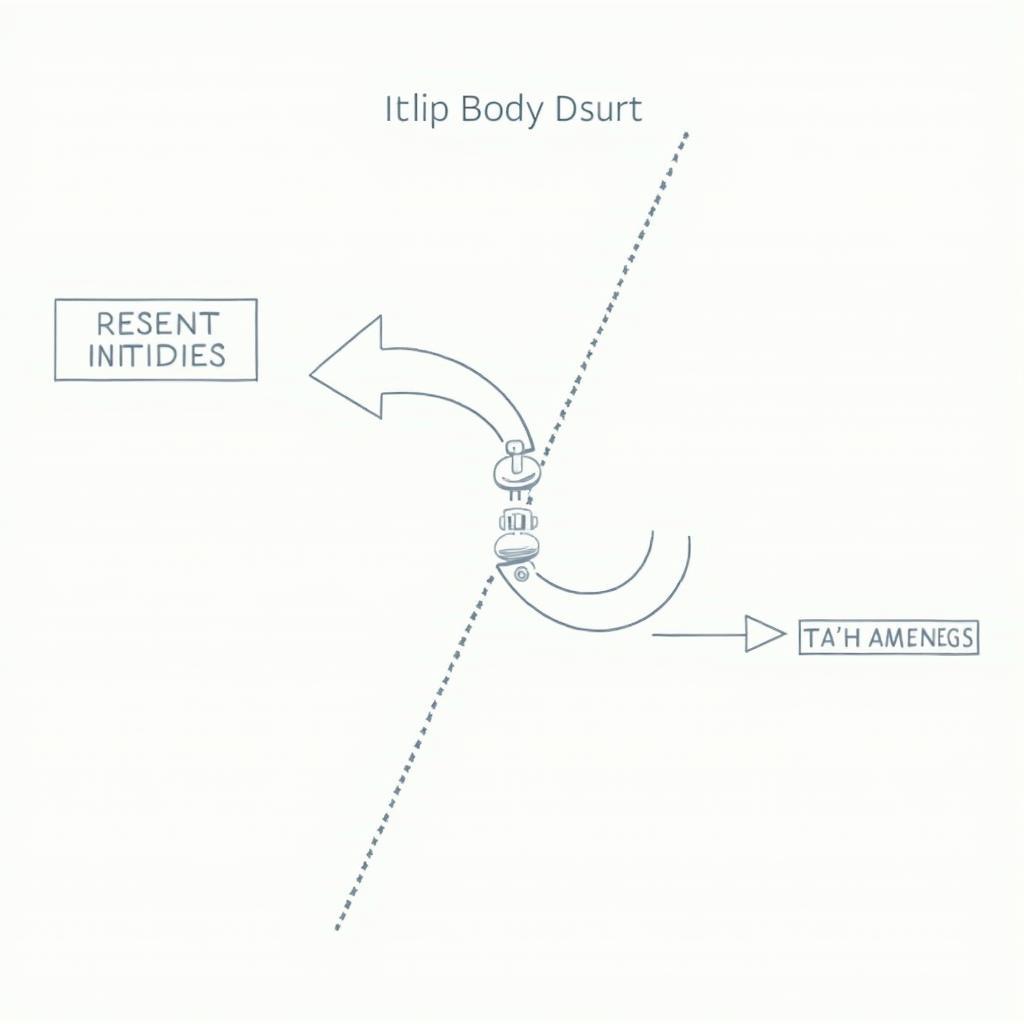Trong nhiều đề thi thật gần đây, chủ đề năng lượng tái tạo và việc làm bền vững xuất hiện với tần suất cao vì nó chạm đến ba trụ cột lớn: kinh tế, môi trường và xã hội. Với tư cách giảng viên IELTS hơn 20 năm, tôi nhận thấy thí sinh Việt Nam thường thiếu vốn từ chuyên đề, dễ sa đà vào “môi trường xanh” mà bỏ lỡ góc nhìn thị trường lao động. Bài viết này giúp bạn nắm chắc cách triển khai ý tưởng xoay quanh How Renewable Energy Can Create Sustainable Job Opportunities, với 3 bài mẫu theo thang Band 5-6, 6.5-7 và 8-9; kèm phân tích chấm điểm, từ vựng, cấu trúc câu ăn điểm, checklist luyện viết và mẹo thời gian.
Các đề tương tự đã được xác nhận trên các trang uy tín:
- IELTS Liz (Environment topic – Sample Questions): “Fossil fuels are the main source of energy in some countries. However, in some countries the use of alternative sources of energy is encouraged. To what extent do you think this is a positive or negative development?”
- IELTS-Blog.com (đề tổng hợp theo chủ đề): “The use of renewable energy sources such as wind and solar is becoming more popular. Do you think this is a positive or negative development?”
- Các dạng “Agree/Disagree” về đầu tư công cho năng lượng sạch thường xuyên xuất hiện trong danh mục chủ đề của British Council/IDP (mục Writing Task 2 topics).
Bạn sẽ học được:
- Cách phân tích đề và định hướng luận điểm
- 3 bài mẫu đủ 250+ từ, đúng cấu trúc chuẩn thi
- Bảng chấm điểm chi tiết theo 4 tiêu chí band descriptors
- Từ vựng chủ đề, collocations học thuật, cấu trúc câu ghi điểm
- Checklist tự chấm và lộ trình cải thiện lên Band mong muốn
[internal_link: IELTS Writing Task 2 chủ đề Môi trường]
1. Đề Writing Part 2
Fossil fuels are the main source of energy in many countries. However, in some places, the use of alternative sources of energy is encouraged. To what extent do you think this is a positive or negative development?
Dịch đề: Nhiên liệu hóa thạch là nguồn năng lượng chính ở nhiều quốc gia. Tuy nhiên, tại một số nơi, việc sử dụng các nguồn năng lượng thay thế được khuyến khích. Bạn cho rằng đây là một phát triển tích cực hay tiêu cực ở mức độ nào?
Phân tích đề bài:
- Dạng câu hỏi: Positive/Negative development (đánh giá lợi-hại và đưa quan điểm rõ ràng).
- Từ khóa: fossil fuels (nhiên liệu hóa thạch), alternative sources of energy (năng lượng thay thế = năng lượng tái tạo), encouraged (được khuyến khích).
- Lỗi thường gặp:
- Chỉ viết về biến đổi khí hậu, quên trục kinh tế và việc làm (task response kém).
- Nêu ý chung chung, thiếu ví dụ cụ thể/logic kinh tế.
- Lệch đề: biến thành “so sánh công nghệ” hoặc “năng lượng hạt nhân”.
- Lỗi mạo từ a/an/the, chia động từ hiện tại đơn.
- Cách tiếp cận:
- Nêu luận điểm rõ: tích cực chủ đạo, thừa nhận rủi ro chuyển dịch việc làm.
- 2 thân bài: (1) Lợi ích môi trường + an ninh năng lượng; (2) Lợi ích kinh tế – how renewable energy can create sustainable job opportunities (chuỗi giá trị, reskilling, multiplier effects).
- Kết hợp ví dụ toàn cầu và Việt Nam khi phù hợp.
 Infographic về how renewable energy can create sustainable job opportunities]
Infographic về how renewable energy can create sustainable job opportunities]
2. Bài mẫu Band 8-9
Bài viết Band 8-9: lập luận nhất quán, ý tưởng sâu, ví dụ đủ thuyết phục, từ vựng học thuật chính xác, cấu trúc câu linh hoạt và tự nhiên.
Essay (290–310 words):
While climate imperatives often dominate the debate on renewable power, a less-discussed yet decisive advantage is its capacity to generate sustainable employment across an entire value chain. In my view, the strategic shift away from fossil fuels is overwhelmingly positive, not only for the planet but also for resilient, inclusive labour markets.
First, renewables reduce exposure to volatile fuel prices and decarbonise electricity, thereby improving public health and productivity. More importantly, clean energy industries are labour‑intensive at the installation stage and create long‑term, decent jobs in operations and maintenance. Solar and wind projects require electricians, technicians, civil engineers, data analysts, and grid specialists. These roles are geographically distributed—rooftop solar on homes, community wind farms—so employment opportunities spread beyond capital cities, revitalising rural and peri‑urban areas.
Second, the job potential is not confined to construction sites. Upstream, there is demand for R&D, component manufacturing, and supply‑chain logistics; downstream, opportunities arise in grid modernisation, energy storage, and digital services like forecasting and asset management. When governments deploy smart industrial policy—public procurement, feed‑in tariffs, and targeted tax credits—the sector catalyses local SMEs and apprenticeships, with strong multiplier effects across the economy.
Admittedly, communities anchored in coal or oil may face dislocation. Yet this is an argument for a just transition, not for inaction. With serious reskilling, portable certifications, and place‑based investment—repurposing brownfield sites for battery assembly or turbine components—workers can move into cleaner, safer roles. International experience shows that reskilling electricians, welders, and mechanics is both feasible and cost‑effective.
In short, renewables are not a job killer but a job shifter—towards healthier industries with future‑proof skills. If policymakers align education, finance, and infrastructure, the clean‑energy transition will deliver not just lower emissions but sustainable job opportunities at scale.
Phân tích Band điểm
| Tiêu chí | Band | Nhận xét |
|---|---|---|
| Task Response (Hoàn thành yêu cầu) | 8.5 | Trả lời trực tiếp tích cực/tiêu cực, lập luận hai trụ: môi trường và việc làm bền vững. Có nhượng bộ “just transition” và giải pháp reskilling, phát triển ý sâu, ví dụ cụ thể. |
| Coherence & Cohesion (Mạch lạc & Liên kết) | 8.0 | Bố cục rõ ràng, chủ đề câu đầu mỗi đoạn mạnh. Dùng chuyển đoạn hợp lý; tuy nhiên có thể thêm số liệu/địa danh cụ thể để tăng tính thuyết phục. |
| Lexical Resource (Từ vựng) | 8.5 | Vốn từ học thuật đa dạng: labour-intensive, grid modernisation, multiplier effects, just transition. Collocations chuẩn; dùng thuật ngữ đúng ngữ cảnh, tự nhiên. |
| Grammatical Range & Accuracy (Ngữ pháp) | 8.0 | Cấu trúc câu đa dạng: mệnh đề quan hệ, cụm phân từ, đảo ngữ nhẹ. Độ chính xác cao; có câu dài nhưng vẫn rõ nghĩa. |
Các yếu tố giúp bài này được chấm điểm cao
- Khung lập luận hai tầng: lợi ích hệ thống + cơ chế tạo việc làm theo chuỗi giá trị.
- Dẫn chứng mang tính chính sách: public procurement, feed-in tariff, tax credits.
- Xử lý phản biện “mất việc” bằng khái niệm just transition và reskilling.
- Từ vựng chuyên đề phong phú, kết hợp collocations kinh tế và năng lượng.
- Câu chủ đề sắc nét, bám sát câu hỏi; kết luận ngắn gọn, giàu tính khái quát.
- Liên kết logic theo “upstream–installation–downstream” rất mạch lạc.
3. Bài mẫu Band 6.5-7
Đặc điểm Band 6.5-7: Lập luận rõ, ví dụ phù hợp, từ vựng đủ dùng; đôi khi lặp từ, cấu trúc chưa thật linh hoạt.
Essay (255–275 words):
Many people argue that renewable energy is mainly about protecting the environment. I agree it helps to cut emissions, but I also believe it can create sustainable job opportunities if governments support the transition properly.
On the one hand, solar and wind power lower air pollution and make electricity prices more stable in the long run. Installing panels and turbines needs a large number of workers, from technicians and electricians to site managers. These are not temporary benefits only. Systems must be monitored and repaired for decades, so communities can keep jobs in operations and maintenance. In addition, small businesses can provide services such as cleaning panels, transporting equipment, or training new staff.
On the other hand, some worry about job losses in coal mining or oil extraction. This concern is valid, especially in regions where these industries dominate. However, many skills are transferable. For example, welders and mechanics can move into building metal frames for wind turbines, and electricians can work in rooftop solar. If local authorities fund reskilling programs and partner with companies, the negative impact can be reduced. Over time, upgrading the electricity grid and installing batteries will also open new positions for engineers and data analysts.
In conclusion, the shift to clean energy is a positive development overall. It protects health and, with the right policies, supports stable employment from factories to households.
Phân tích Band điểm
| Tiêu chí | Band | Nhận xét |
|---|---|---|
| Task Response (Hoàn thành yêu cầu) | 7.0 | Trả lời đầy đủ, có phản biện và giải pháp. Một số luận điểm còn chung chung, thiếu ví dụ tên riêng. |
| Coherence & Cohesion (Mạch lạc & Liên kết) | 7.0 | Bố cục 4 đoạn rõ, dùng từ nối hợp lý. Có lặp cấu trúc mở đoạn, nhưng không ảnh hưởng hiểu. |
| Lexical Resource (Từ vựng) | 7.0 | Từ vựng phù hợp chủ đề: operations and maintenance, reskilling, grid. Có lặp “jobs/workers” đôi chút. |
| Grammatical Range & Accuracy (Ngữ pháp) | 6.5 | Câu ghép, phức ở mức trung bình; ít lỗi nhỏ về mạo từ. Cần thêm cấu trúc đa dạng để lên Band 7.5+. |
So sánh với bài Band 8-9
- Bài 8-9 có chiều sâu chính sách (industrial policy, feed-in tariff), còn bài 6.5-7 dừng ở mức “chính quyền hỗ trợ”.
- Vốn từ: 8-9 dùng collocations học thuật và thuật ngữ kinh tế; 6.5-7 dùng từ chính xác nhưng lặp lại.
- Cấu trúc câu: 8-9 linh hoạt (cụm phân từ, đảo ngữ), 6.5-7 thiên về câu đơn/câu ghép.
4. Bài mẫu Band 5-6
Đặc điểm Band 5-6: Có ý đúng hướng nhưng phát triển ý hạn chế, lặp từ, nhiều lỗi ngữ pháp/mạo từ/giới từ; liên kết còn lỏng.
Essay (250–265 words):
People think renewable energy is only about the environment, but it also can make many jobs. However, some people say it will remove jobs in coal and oil, so it is not good. In my opinion, it is mostly positive.
Firstly, solar and wind are clean and become cheaper. When we install solar panel on houses, it needs workers and engineer do the planning. These jobs is not only for a short time because systems need to maintenance. Many small company can join, like cleaning or transport equipment. This help local economy.
Secondly, there are worries about workers in coal mines. It is true some jobs will be lost. But governments should give training for these people and then they can work in renewable energy. For example, the electrician can move to rooftop solar or wind farm. Also, when we upgrade the grid and put battery, we need more staff.
However, we must make plan carefully. If there is no enough support, some communities maybe suffer. So I think renewable energy is good, but we need a lot of informations and planning to do it well.
In conclusion, renewable energy protect environment and create jobs in many area. Governments should help training and make policy to make the change more smoothly.
Phân tích Band điểm
| Tiêu chí | Band | Nhận xét |
|---|---|---|
| Task Response (Hoàn thành yêu cầu) | 6.0 | Có quan điểm và 2 lý do chính; ví dụ còn chung, thiếu chiều sâu. |
| Coherence & Cohesion (Mạch lạc & Liên kết) | 5.5 | Liên kết cơ bản; lặp cấu trúc, từ nối đơn giản; vài câu rời rạc. |
| Lexical Resource (Từ vựng) | 5.5 | Từ vựng hạn chế, lặp “jobs”, “workers”; vài collocation sai. |
| Grammatical Range & Accuracy (Ngữ pháp) | 5.5 | Lỗi mạo từ, chia động từ, danh động từ, số ít/số nhiều; cấu trúc câu đơn giản. |
Những lỗi sai của bài – phân tích & giải thích
| Lỗi sai | Loại lỗi | Sửa lại | Giải thích |
|---|---|---|---|
| engineer do | Chia động từ | engineers do / an engineer does | Chủ ngữ số nhiều/số ít phải phù hợp với động từ. |
| jobs is | Hòa hợp S-V | jobs are | Danh từ số nhiều đi với “are”. |
| need to maintenance | Dùng từ loại | need maintenance / need to be maintained | “Maintenance” là danh từ; dùng “need + N” hoặc “need to be + V3”. |
| small company | Số ít/số nhiều | small companies | Nên dùng số nhiều khi nói chung. |
| the electrician | Mạo từ | electricians / an electrician | Dùng số nhiều để chỉ nhóm nghề nói chung, không dùng “the”. |
| no enough | Trật tự từ | not enough | Cấu trúc đúng: not enough + noun. |
| informations | Danh từ không đếm được | information | “Information” không đếm được. |
Cách Cải Thiện Từ Band 6 Lên Band 7
- Mở rộng ý bằng chuỗi giá trị: R&D → manufacturing → installation → O&M → grid upgrade.
- Dùng collocations chuẩn: job creation, skills transfer, just transition, grid integration.
- Đa dạng cấu trúc: mệnh đề quan hệ, cụm phân từ, câu điều kiện.
- Kiểm tra mạo từ, số ít/số nhiều, và giới từ phổ biến (in/for/of).
- Thêm ví dụ cụ thể theo bối cảnh Việt Nam: điện mặt trời mái nhà, điện gió ngoài khơi, đào tạo nghề địa phương.
5. Từ vựng quan trọng cần nhớ
| Từ/Cụm từ | Loại từ | Phiên âm | Nghĩa tiếng Việt | Ví dụ (tiếng Anh) | Collocations |
|---|---|---|---|---|---|
| renewable energy | n. | /rɪˈnuːəbl ˈenədʒi/ | năng lượng tái tạo | Renewable energy reduces dependence on imports. | renewable energy sector/sources/policy |
| sustainable job opportunities | n. | /səˈsteɪnəbl dʒɒb ˌɒpəˈtjuːnɪtiz/ | cơ hội việc làm bền vững | The transition can create sustainable job opportunities. | create/provide/build sustainable jobs |
| value chain | n. | /ˈvæljuː tʃeɪn/ | chuỗi giá trị | Jobs appear across the energy value chain. | across/along the value chain |
| just transition | n. | /dʒʌst trænˈzɪʃn/ | chuyển dịch công bằng | A just transition protects affected workers. | ensure/support a just transition |
| reskilling | n./v. | /ˌriːˈskɪlɪŋ/ | đào tạo lại kỹ năng | Reskilling miners can mitigate job losses. | reskilling programs/initiatives |
| grid integration | n. | /ɡrɪd ˌɪntɪˈɡreɪʃn/ | tích hợp lưới điện | Storage improves grid integration of solar. | improve/enable grid integration |
| labour‑intensive | adj. | /ˈleɪbə ɪnˈtensɪv/ | thâm dụng lao động | Installation is labour‑intensive. | labour‑intensive installation/process |
| multiplier effect | n. | /ˈmʌltɪplaɪə r ɪˈfekt/ | hiệu ứng lan tỏa | Clean energy has a strong multiplier effect. | strong/significant multiplier effect |
| feed‑in tariff | n. | /ˌfiːd ɪn ˈtærɪf/ | giá FIT điện tái tạo | A feed‑in tariff can attract investment. | introduce/revise a feed-in tariff |
| decarbonise | v. | /ˌdiːˈkɑːbənaɪz/ | khử carbon | Policies to decarbonise the power sector. | decarbonise the economy/sector |
| public procurement | n. | /ˈpʌblɪk prəˈkjʊəmənt/ | mua sắm công | Public procurement can shape markets. | green public procurement |
| in the long run | phrase | /ɪn ðə lɒŋ rʌn/ | về lâu dài | Renewables are cheaper in the long run. | in the long run/short term |
| by the same token | linker | /baɪ ðə seɪm ˈtəʊkən/ | tương tự, vì lý do đó | By the same token, training must be funded. | By the same token, … |
| to a large extent | linker | /tuː ə lɑːdʒ ɪkˈstent/ | ở mức độ lớn | It is positive to a large extent. | to a large extent/degree |
| spillover | n. | /ˈspɪlˌəʊvə/ | lan tỏa | There are job spillovers to local SMEs. | positive/knowledge spillovers |
[internal_link: Học từ vựng IELTS chủ đề Năng lượng]
6. Cấu trúc câu dễ ăn điểm cao
- Câu phức với mệnh đề phụ thuộc
- Công thức: Mệnh đề phụ thuộc (when/while/because/although) + mệnh đề chính.
- Ví dụ từ bài 8-9: “While climate imperatives often dominate the debate, a decisive advantage is job creation.”
- Vì sao ghi điểm: Tạo tương phản logic, nhấn luận điểm.
- Ví dụ bổ sung:
- Although costs are falling, training remains essential.
- Because grids are outdated, integration is difficult.
- Lỗi thường gặp: Thiếu dấu phẩy sau mệnh đề phụ thuộc dài; dùng although nhưng lại thêm but.
- Mệnh đề quan hệ không xác định (non-defining)
- Công thức: Danh từ, which/who + mệnh đề, mệnh đề chính.
- Ví dụ: “clean energy industries, which are labour‑intensive at the installation stage, create long‑term jobs.”
- Điểm mạnh: Bổ sung thông tin mượt mà, tăng mật độ thông tin.
- Ví dụ khác:
- The grid, which is the backbone of the system, needs upgrades.
- These programs, which target technicians, are effective.
- Lỗi thường gặp: Quên dấu phẩy, dùng that thay vì which trong mệnh đề không xác định.
- Cụm phân từ
- Công thức: V-ing/V-ed + cụm bổ nghĩa, mệnh đề chính.
- Ví dụ: “Admittedly, communities anchored in coal may face dislocation.” (trạng từ mở đầu); hoặc “Creating apprenticeships, governments can ease the transition.”
- Ưu điểm: Cô đọng ý, tạo nhịp điệu học thuật.
- Ví dụ khác:
- Facing skills gaps, firms invest in training.
- Built at scale, wind farms lower costs.
- Lỗi: Treo chủ ngữ (dangling participle) làm mơ hồ.
- Câu chẻ (Cleft sentences)
- Công thức: It is/was + thành phần nhấn mạnh + that/who + mệnh đề.
- Ví dụ: “It is the installation phase that generates the most jobs initially.”
- Lợi ích: Nhấn mạnh thông tin quan trọng.
- Ví dụ khác:
- It is reskilling that determines success.
- It was public procurement that triggered local manufacturing.
- Lỗi: Dùng lặp quá nhiều tạo cảm giác gượng.
- Câu điều kiện nâng cao
- Công thức: If + S + were to + V, S + would/could + V.
- Ví dụ: “If policymakers were to align education and finance, the transition would accelerate.”
- Điểm mạnh: Nêu giả định chính sách, thuyết phục.
- Ví dụ khác:
- If utilities were to modernise grids, outages would decline.
- If training were subsidised, uptake would increase.
- Lỗi: Nhầm lẫn thì, dùng “will” trong mệnh đề điều kiện loại 2.
- Đảo ngữ
- Công thức: Not only + trợ động từ + S + V, but also + …
- Ví dụ: “Not only do renewables cut emissions, but they also expand quality employment.”
- Ưu điểm: Tạo nhấn mạnh, phong cách học thuật.
- Ví dụ khác:
- Rarely has energy policy mattered more.
- Hardly ever do such programs fail when funded.
- Lỗi: Quên đảo trợ động từ, sai thì sau đảo ngữ.
 Sơ đồ cấu trúc luận điểm Task 2 về năng lượng và việc làm
Sơ đồ cấu trúc luận điểm Task 2 về năng lượng và việc làm
7. Checklist Tự Đánh Giá
- Trước khi viết:
- Xác định dạng đề (agree/disagree; positive/negative; discuss both).
- Ghi nhanh 2 trụ luận điểm + ví dụ thực tế (mỗi trụ 2 ý nhỏ).
- Chọn từ khóa: reskilling, just transition, grid, value chain.
- Trong khi viết:
- Mở bài: paraphrase + thesis rõ ràng.
- Mỗi đoạn thân: 1 câu chủ đề + 2-3 câu phát triển + 1 ví dụ/liên hệ.
- Dùng từ nối hợp lý: in the long run, by the same token, to a large extent.
- Sau khi viết:
- Soát lỗi mạo từ a/an/the, số ít/số nhiều, giới từ.
- Cắt câu quá dài; thay thế từ lặp bằng đồng nghĩa phù hợp.
- Kiểm tra kết luận có “mở rộng” giá trị (policy, skills).
- Mẹo quản lý thời gian:
- 5 phút phân tích đề + dàn ý.
- 25 phút viết thân bài trước, mở/kết sau.
- 5 phút soát lỗi và chỉnh từ vựng/cấu trúc.
Kết bài
Tóm lại, chủ đề how renewable energy can create sustainable job opportunities không chỉ là “màu xanh” mà còn là câu chuyện kỹ năng, hạ tầng và chính sách. Bạn đã có trong tay 3 bài mẫu theo thang Band, bảng chấm chi tiết, bộ từ vựng-cấu trúc trọng điểm và checklist thực hành. Con đường cải thiện điểm số đến từ việc viết đều đặn, phản hồi nhanh và nâng cấp vốn từ theo chuỗi giá trị năng lượng. Hãy luyện ít nhất 2 đề/tuần, áp dụng khung lập luận và gửi bài để được góp ý từ bạn học.
Thời gian cải thiện thực tế: 4–6 tuần để tăng ~0.5 band nếu duy trì viết-chấm-sửa đều đặn. Tài nguyên gợi ý: danh mục đề môi trường của IELTS Liz, chuyên mục Writing của British Council, và các bài tổng hợp trên IELTS-Blog.com. Bạn có thể xem thêm các bài mẫu liên quan tại [internal_link: IELTS Writing Task 2 chủ đề Kinh tế – Việc làm]. Bây giờ, hãy chọn 1 đề trong danh sách, bấm giờ 40 phút và bắt đầu viết ngay.


